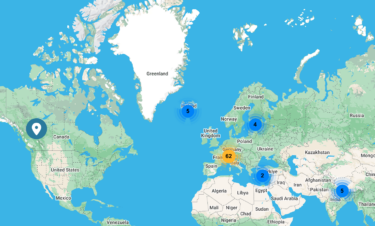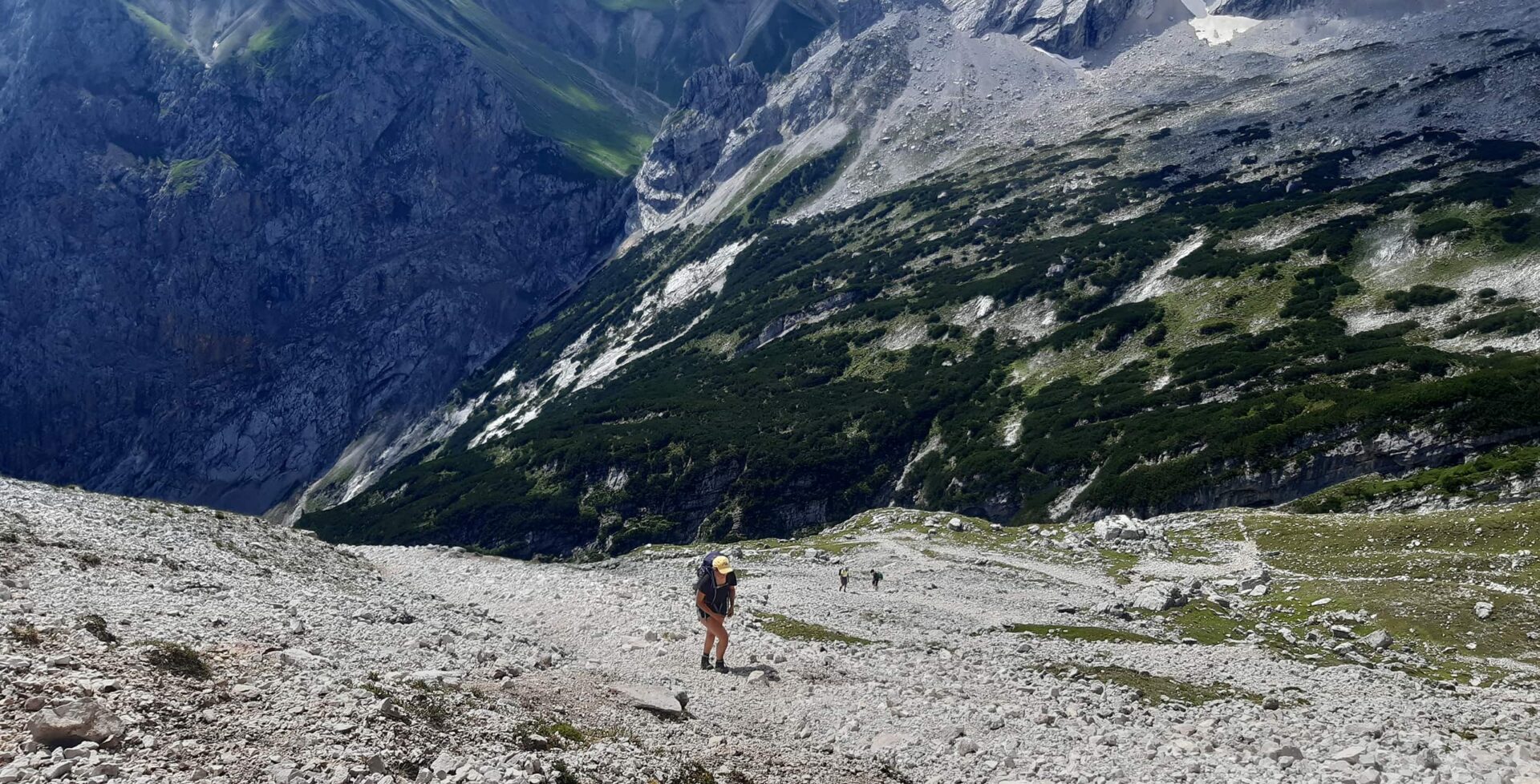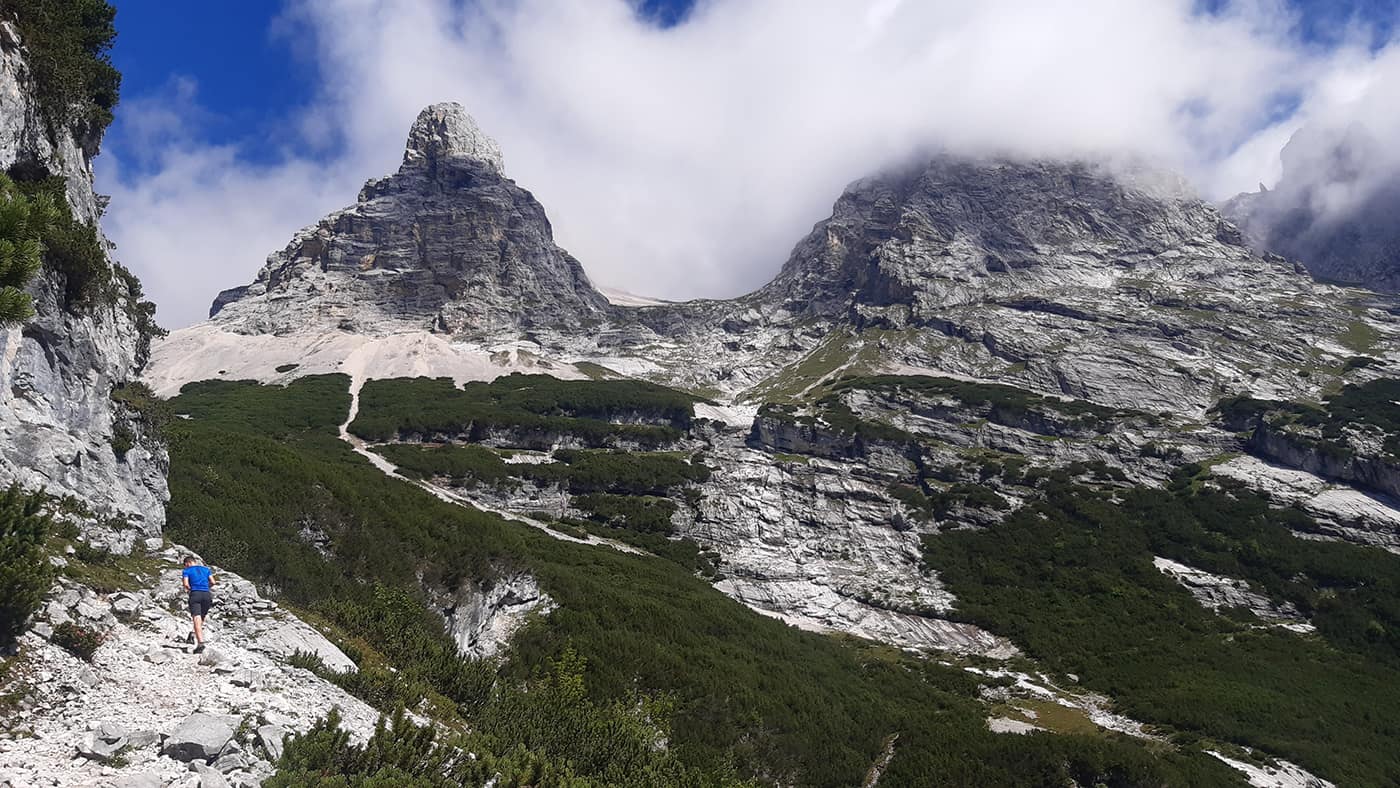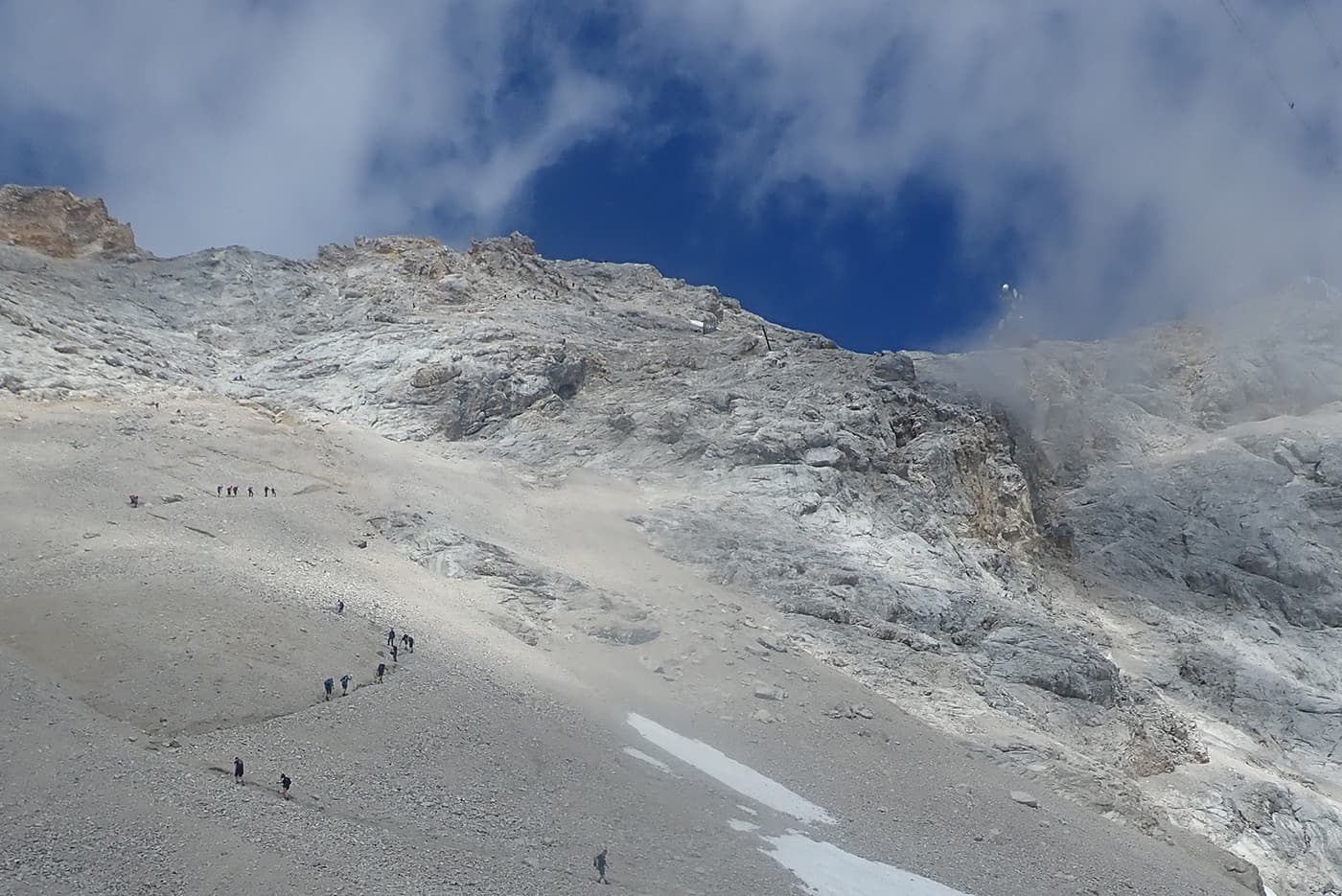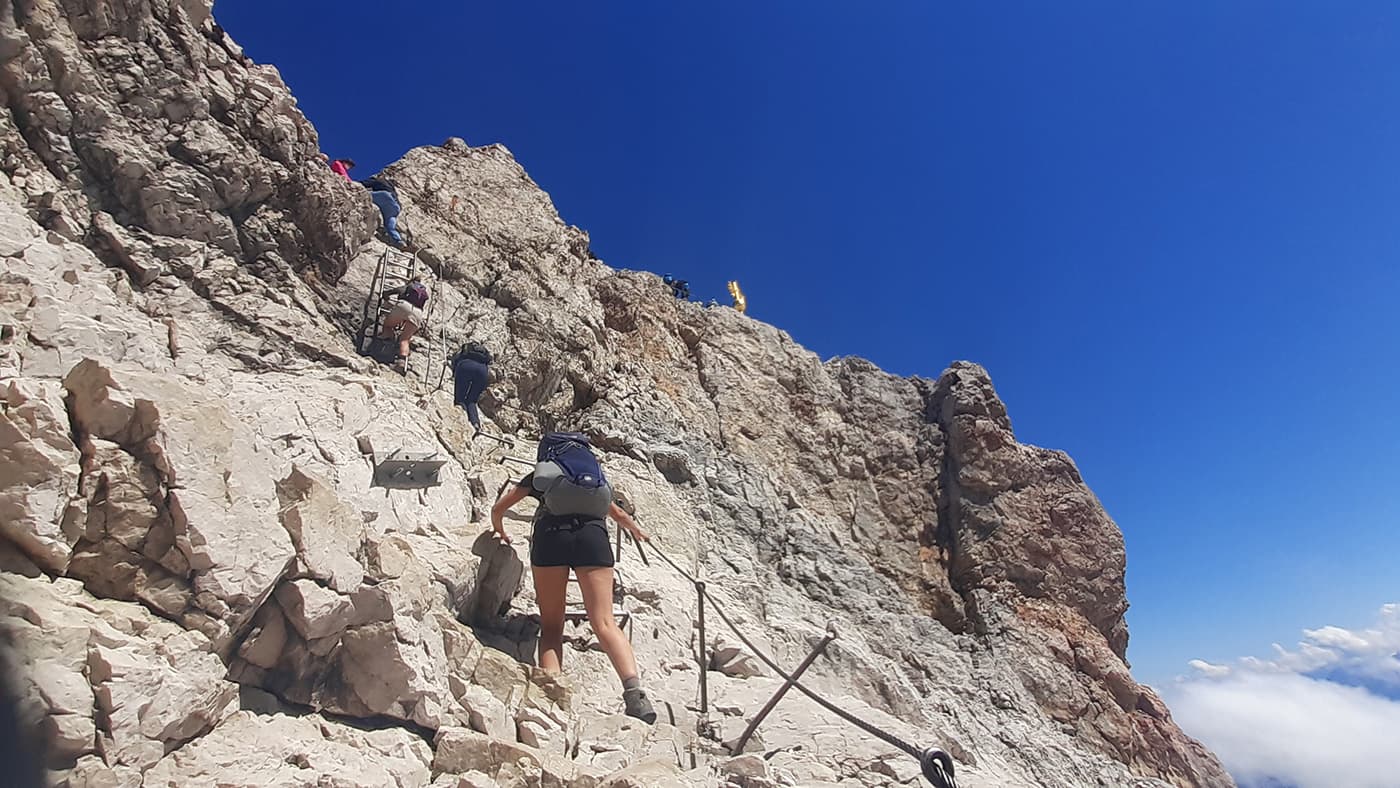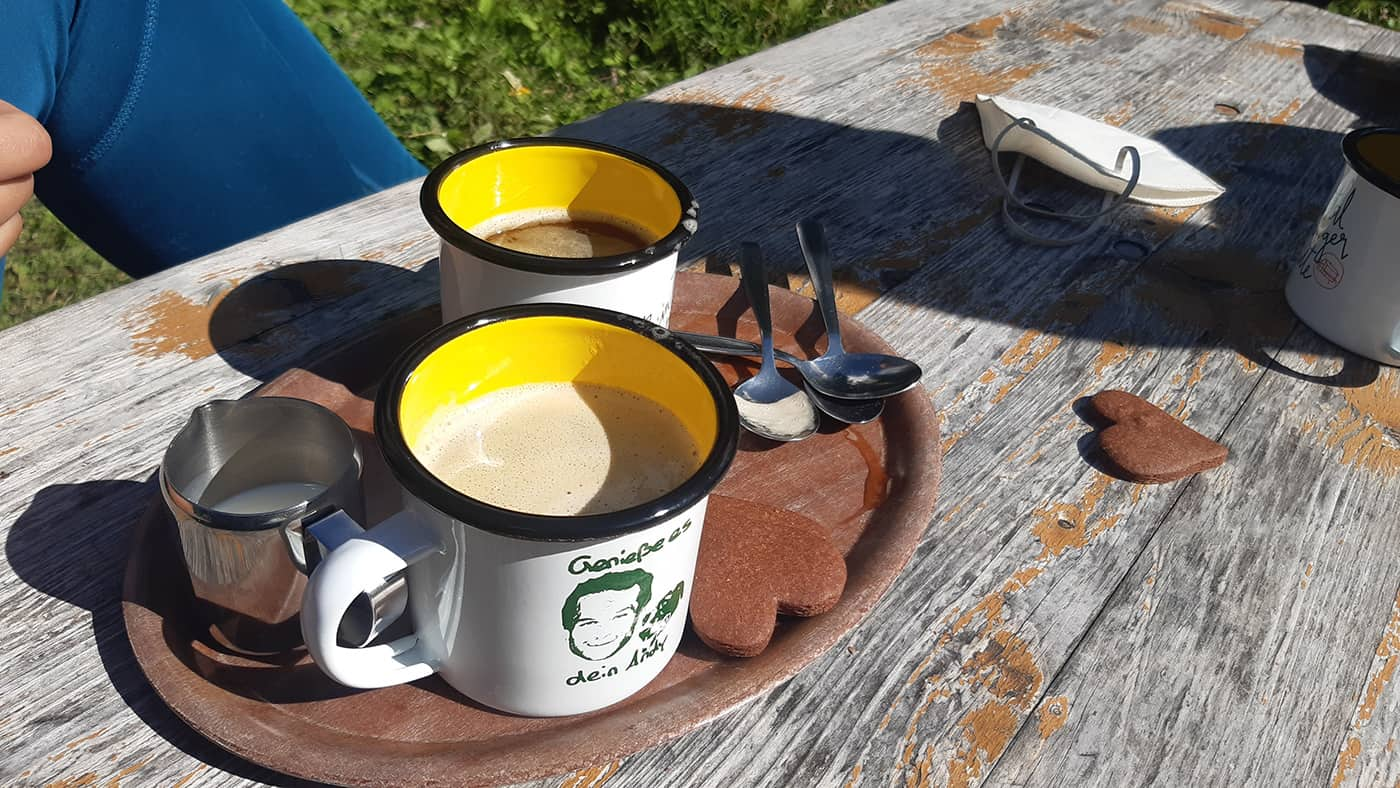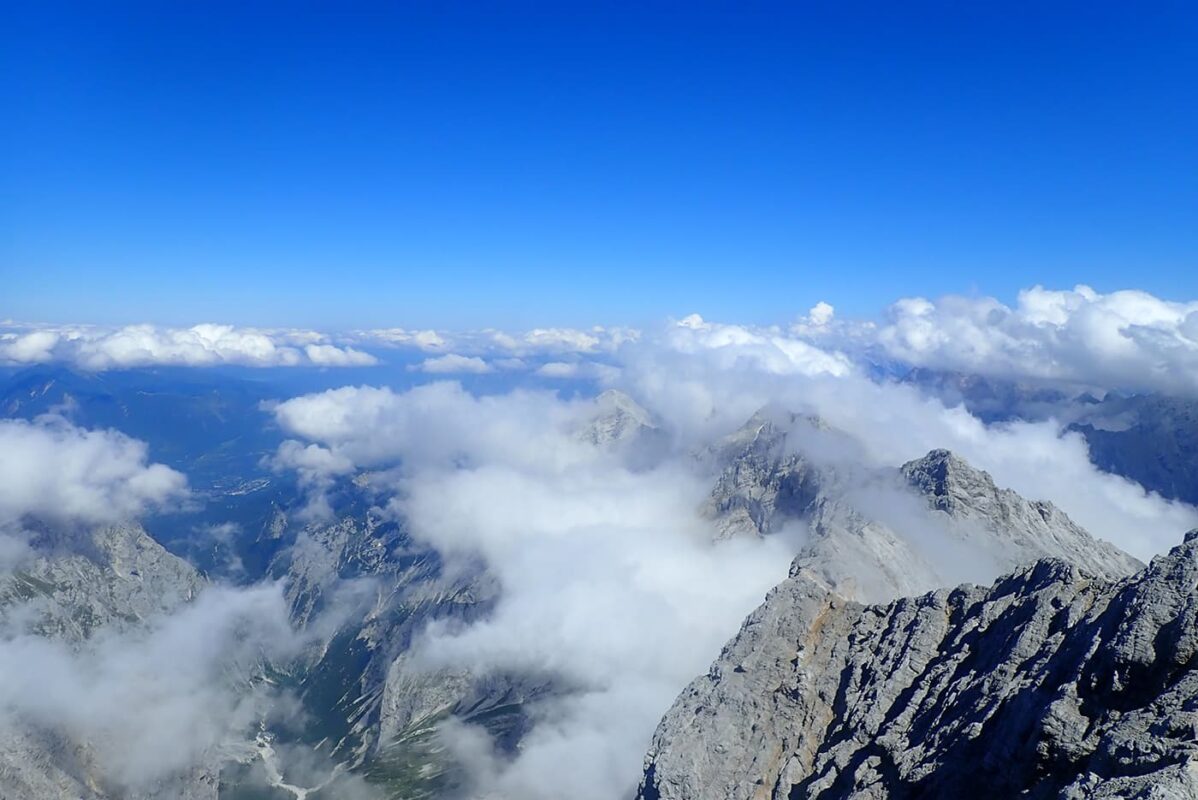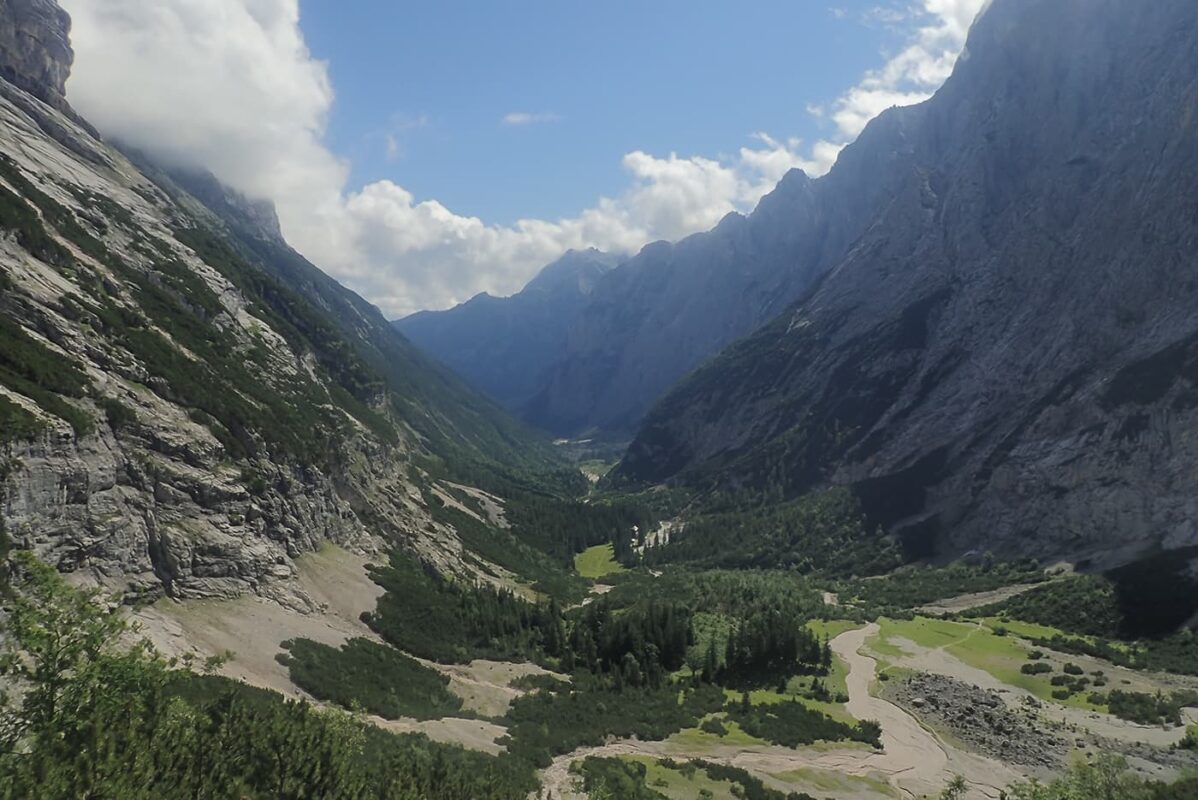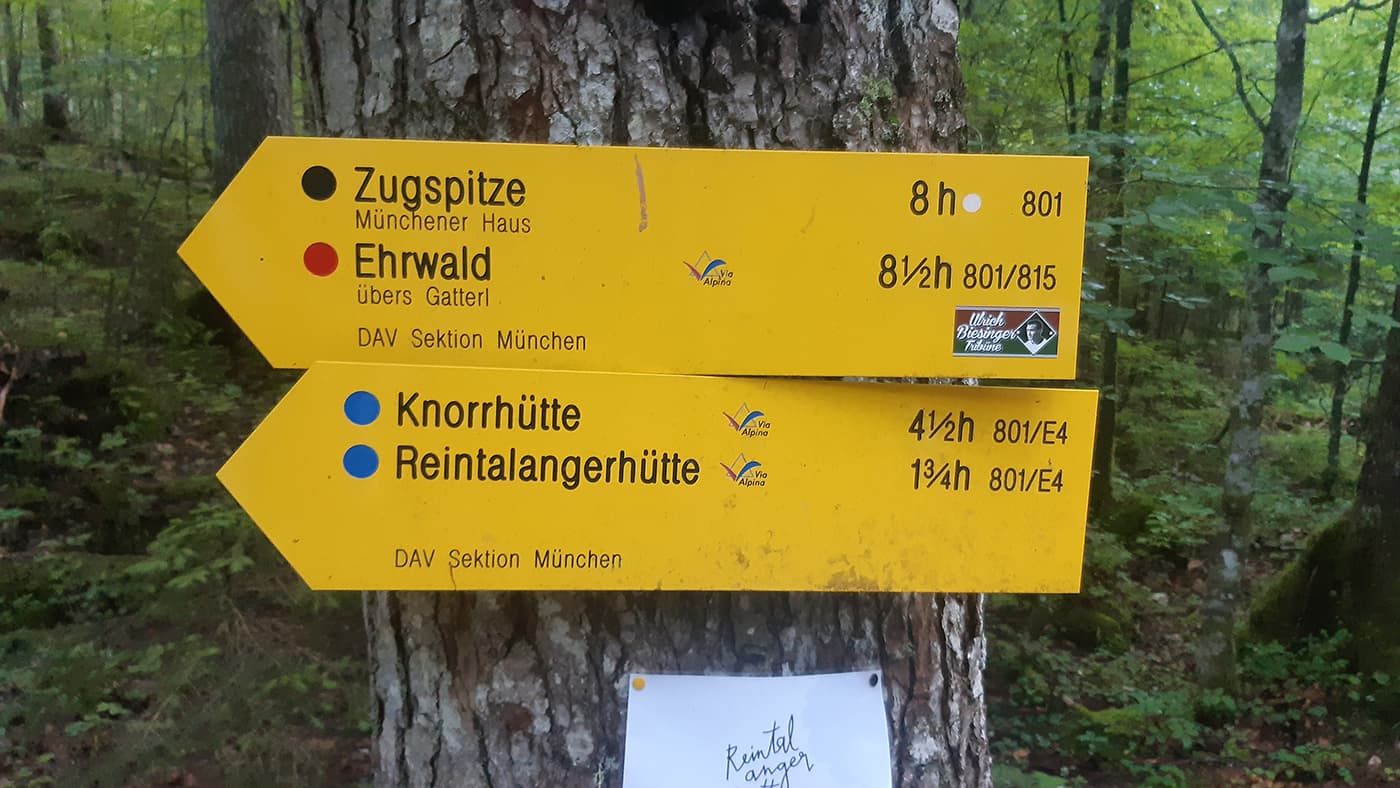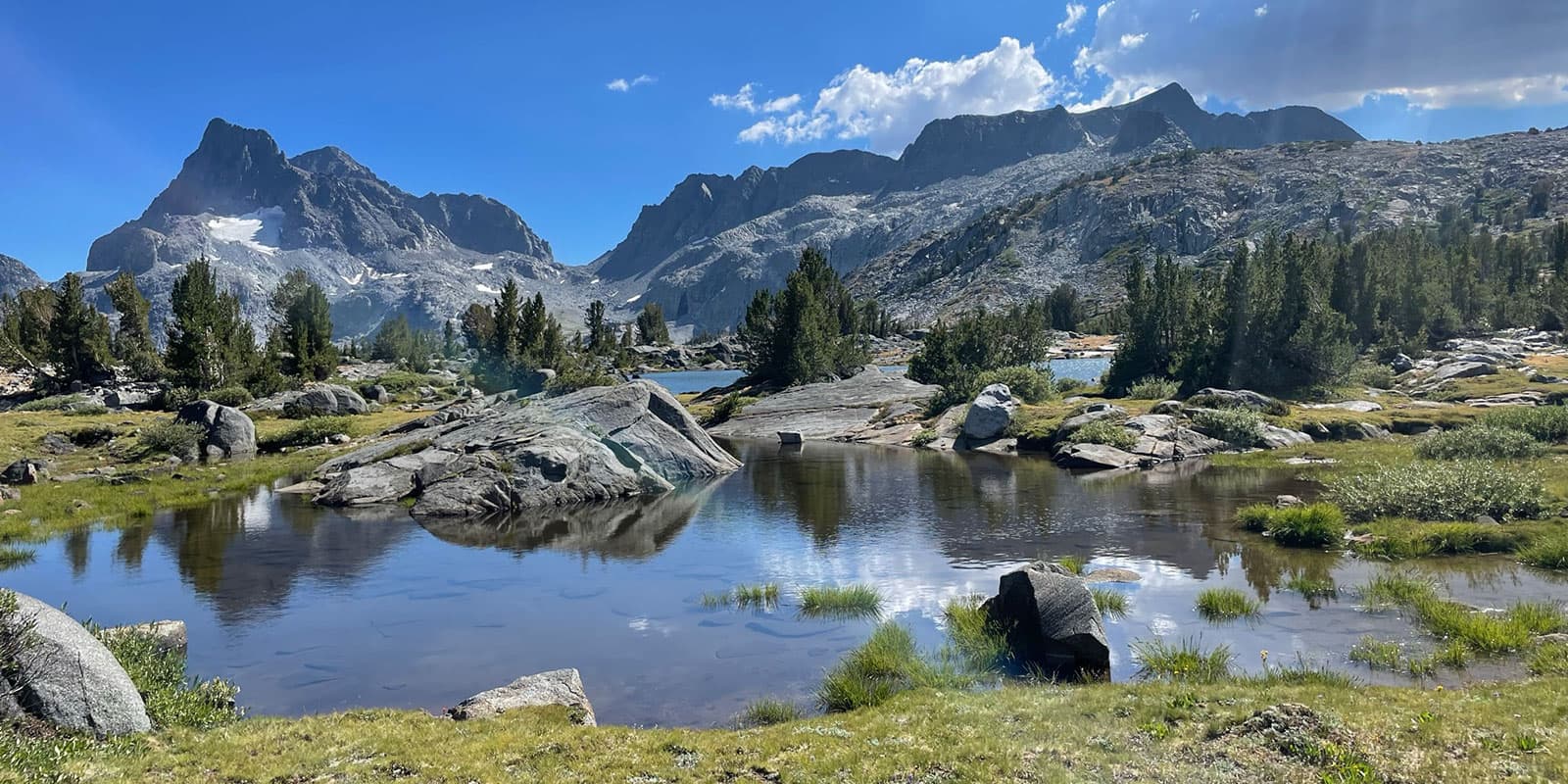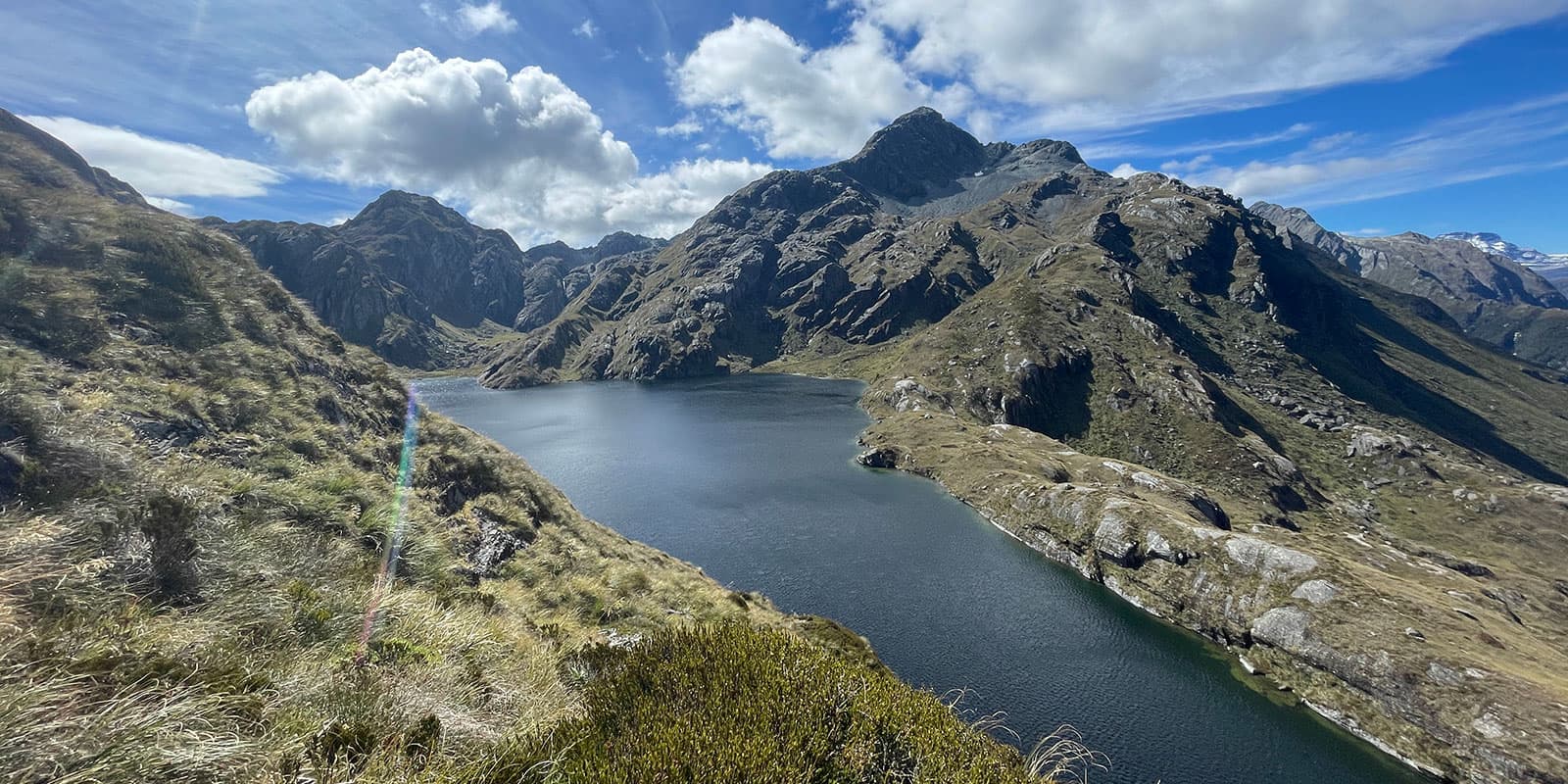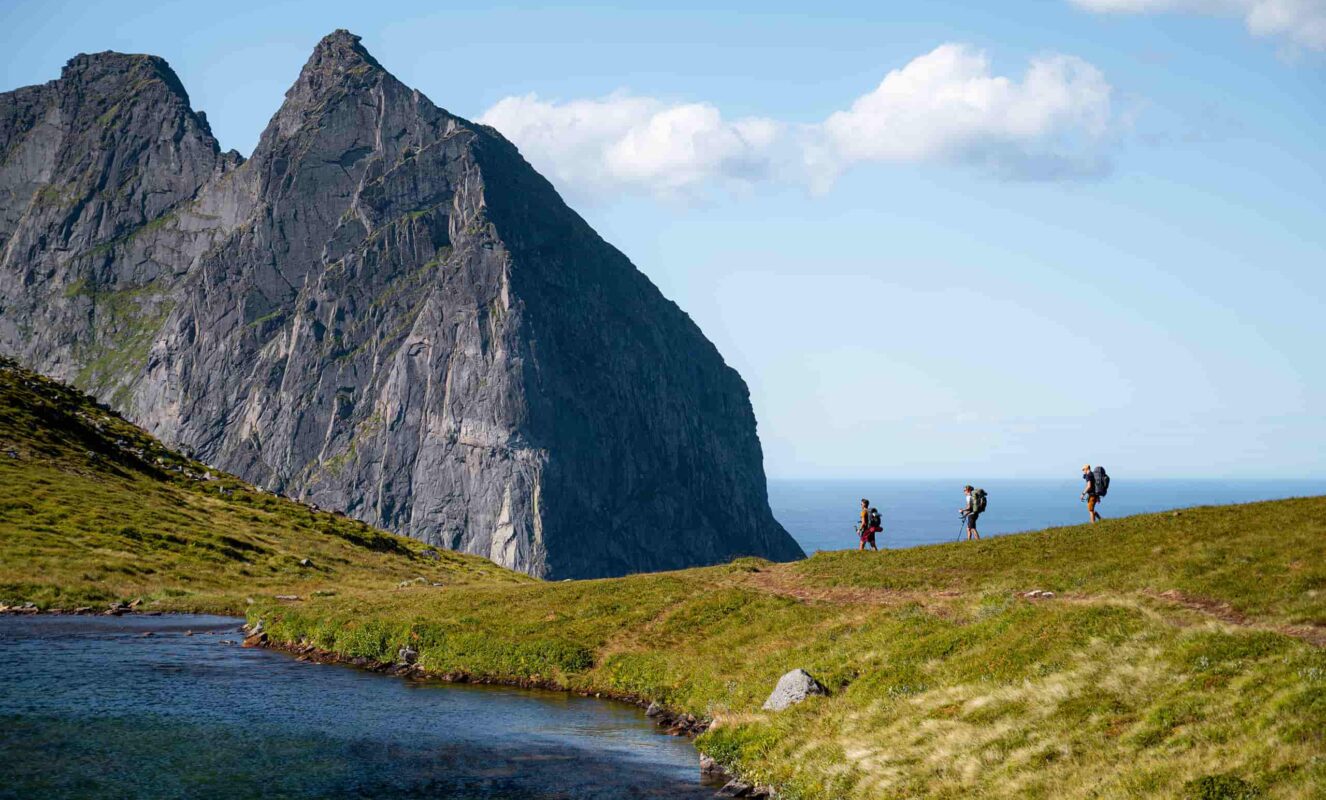From the valley station of the Ehrwalder Almbahn cable car, you can hike to the mountain station via the track or the meadow path. The trail starts just above the station. You will pass the Ganghofer Hütte. Then simply follow the forest road to the Tirolerhaus / Berggasthof Ehrwalder Alm. If you don’t want to walk the ascent, this is where you can also take the cable car. Even if you come by train, you first follow a wide forest road towards Gaistal.
For the rest of the hike, you can simply follow the signs for “Knorrhütte” and “Gatterl.” It is a leisurely ascent that leads to a saddle. Shortly before the Pestkapelle chapel, the path leads left to the “Wettersteinwand” house past the ski slope. Through a strip of forest via the “Max-Klotz-Steig,” you reach the Hochfeldernalm where you can refresh yourself with a cool drink.
The pleasant smell of mountain pines accompanies you on the path through pastures to the 1st pass “Am Brand” (2,120 meters above sea level). The trail then descends slightly to Feldernjöchl (2,041 meters above sea level). Here between Feldernjöchl and Gatterl, a muddy patch can form on the slope after rainy weather. It is then helpful to have hiking poles with you. After a turn-off to the “Steinernen Hüttl”, the trail first descends slightly but then climbs steeply again. The path to the “Gatterl” is secured.
“Gatterl” is the name of the saddle in the German-Austrian border ridge. The saddle was given this name because of a squeaky pasture gate that stands directly on the border between Germany and Austria. It prevents the sheep grazing there in summer from crossing the border from Bavaria into Tyrol. However, the term “Gatterl” actually refers to a short climbing point located on the Tyrolean side behind the pasture gate. This offers a rocky gully that is secured with a wire rope. However, if you are sure-footed and have a head for heights, you should have no problem crossing this passage.
You have now left Austria and entered Germany.


